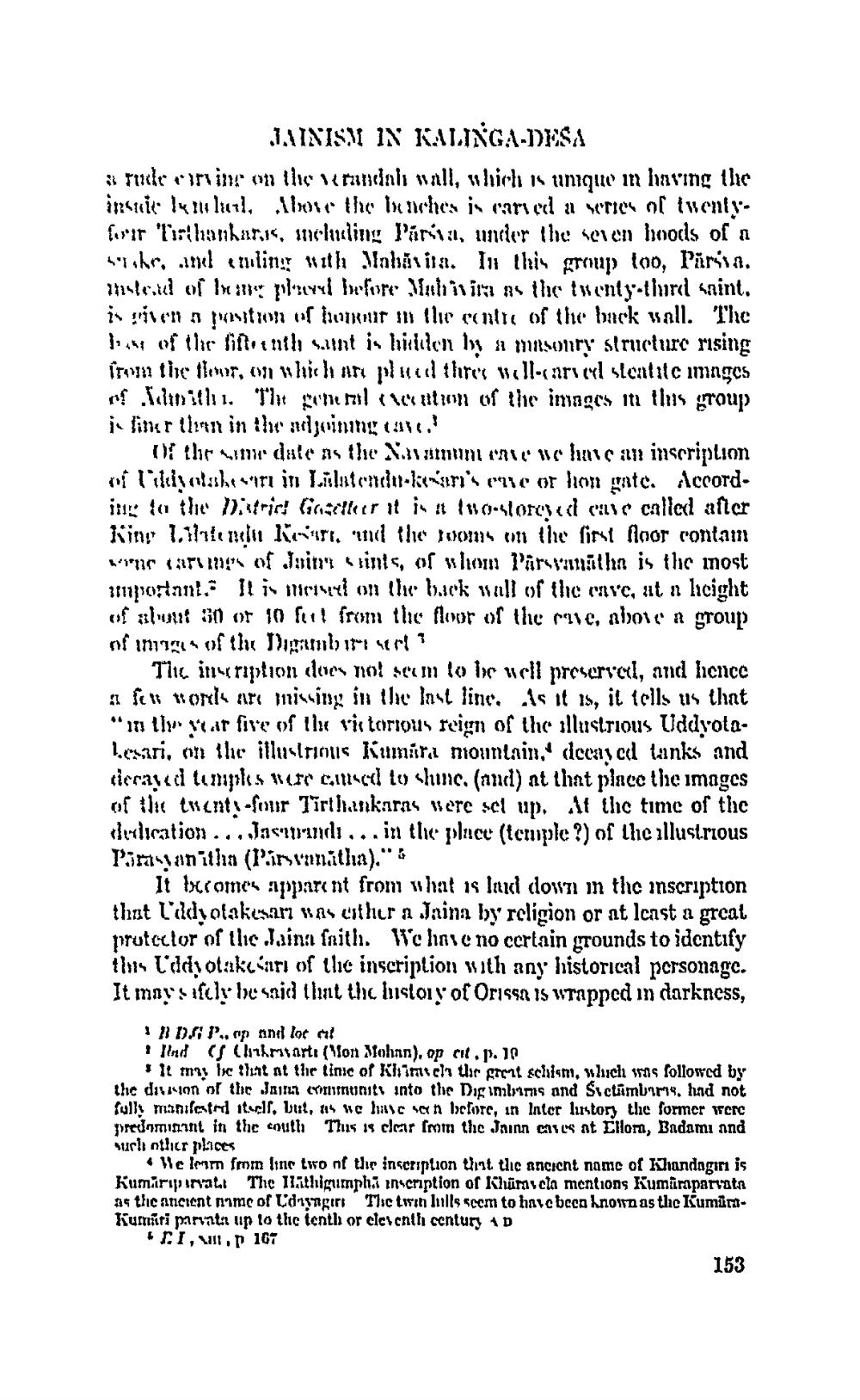________________ JUINISM IN KALINGA-DESA * Tidlerinin on the verandali wall, which is unique in having the insa la mliel, bose the benches is caried a virten of twenty[urit "inhonkar5, meliling l'aria, under the even hods of a hr, indeming with Vnhavia. 11 this group too, Pirin. led of lille plek belure Valinta as the twenty-thur saint. is given a position of humour in the centre of the back wall. The Joan of the fifteenth saint is hidden in a masonry structure rising from the fer, on which are place thres well-caricel stentilc imnges of Smith. "T" pintal 10% aon of the images in this group in liner than in the joinmecata, 0? this mw dutens the X man ne se linician inscription of l'ildether in Lilnteneukens alle or lion gate. According to the trick Ginetter at int (110-storesc caic called after King Lillende kort, und the tooms on the first floor contam Brinc sarungs of Join sints, of whom l'arswanatha is the most 111portant. It is i n on the back wall of the envc, ut a licight of alcuni 30 of 10 fut! from the floor of the rive, above a group nfine of the Nigambar sert? The inscription does not com to be well preserval, and hence a feu nonls are waing in the last line. Is it is, il tells us that "11 tly at five of the victorious reign of the illustrious UddyotaIesari, on the illustrious Kiira mountain,' decay cd tanks and cicrayed temples acte cucd to shunc, (and) at that plnec the images of the trenty-four Tirthinkaras were set up. At thic time of the ducation ... Jaswind ... in the place (temple ?) of the illustrious Pum-sanitha (I'invanitha)." It bx.comes apparent from what is Ind down in the inscription that l'adyolakesar sos cither n Jaina by rcligion or at least a great protector of the Jaina fnith. Tchave no certain grounds to identify ilus l'edyotakcurs of the inscription with any historical personage. It moy's fcly be said tlint the lustory of Orissa is winpped in darkness, #DSI P., op and loc at 1 red ( Clemsorti (Von Mohan). op aut. p. 10 It mus Ise that at the tinc of Khimuch that great schlam, which was followed by the division of the Jnim erit munits into the Digimbims and Sictimurm, had not full manifesti ell, but, wc huic san locforc, in Inter lustory the former were predominant in the couth This is clear from the Jainn cves at Ellora, Badomi nnd wuelinther places McImm fmm line tvo nf the inscription that the ancient name of Khandagini is Kumariparvat. The lathiumphi inscription of 10 irascla mentions Kumiiraparvata as the ancient name of Conyngert Tsc tirih lulle seem to have been known as tlic Kumirakumari parinth up to the tentli or closenth century AD "RI, VII, 167 153




